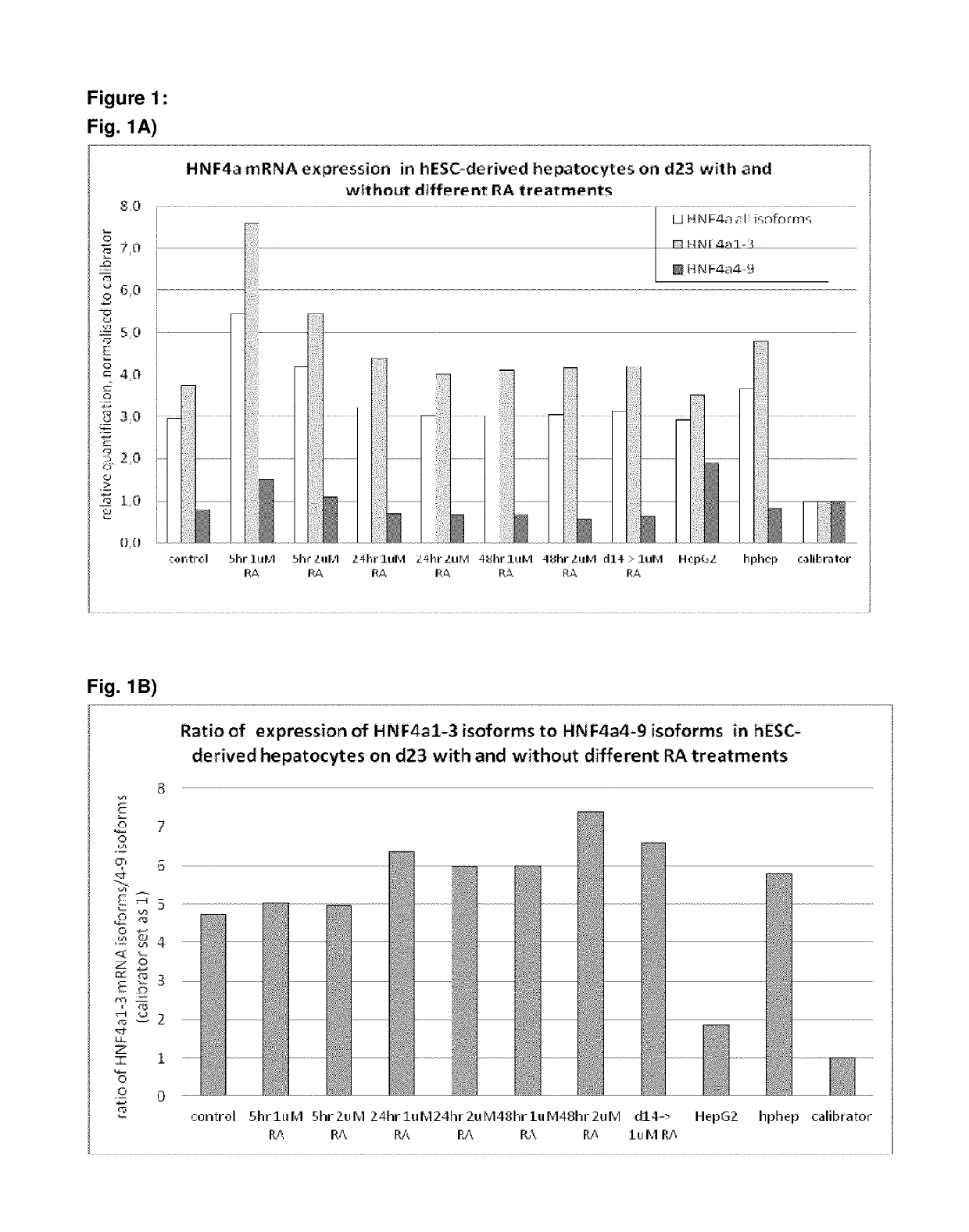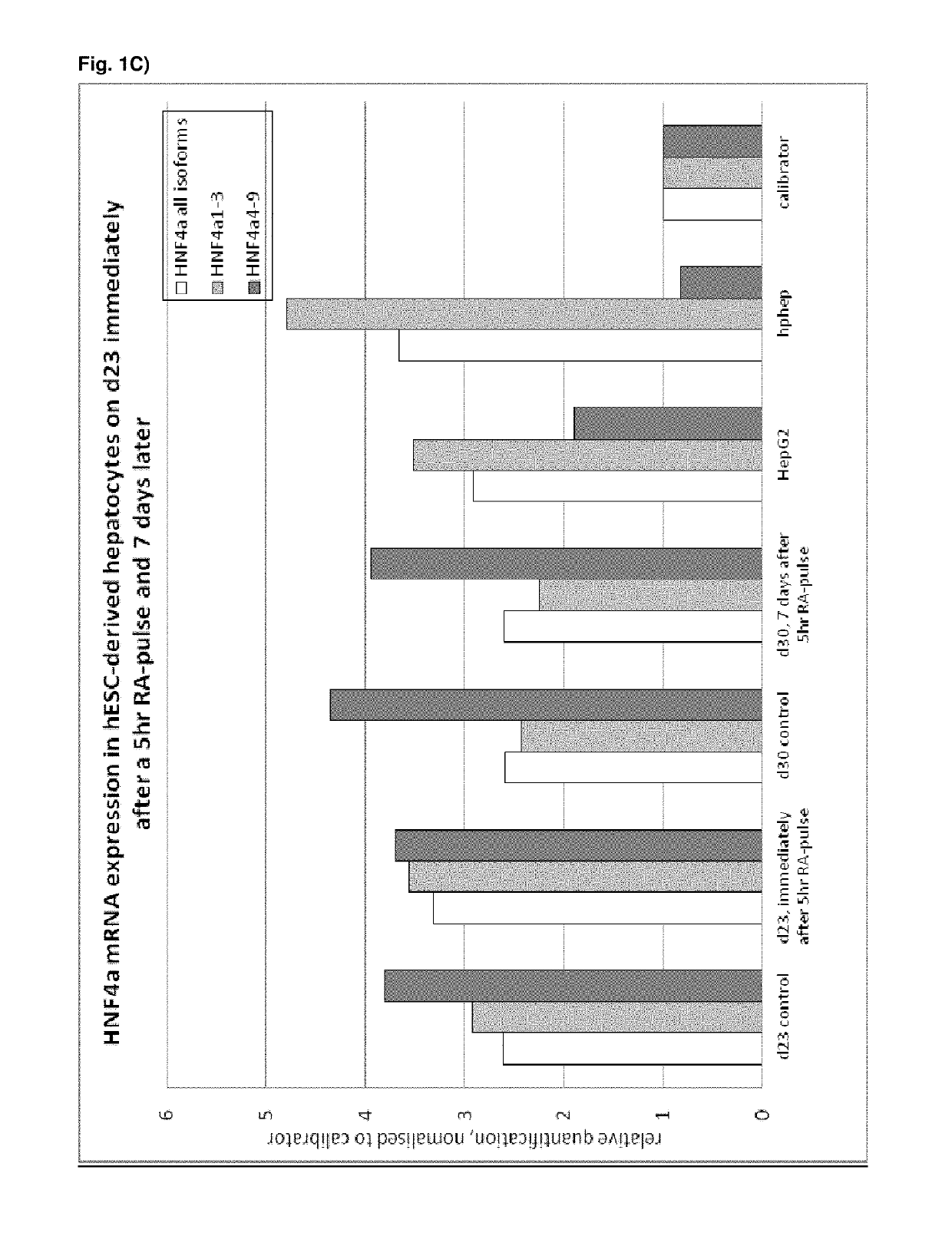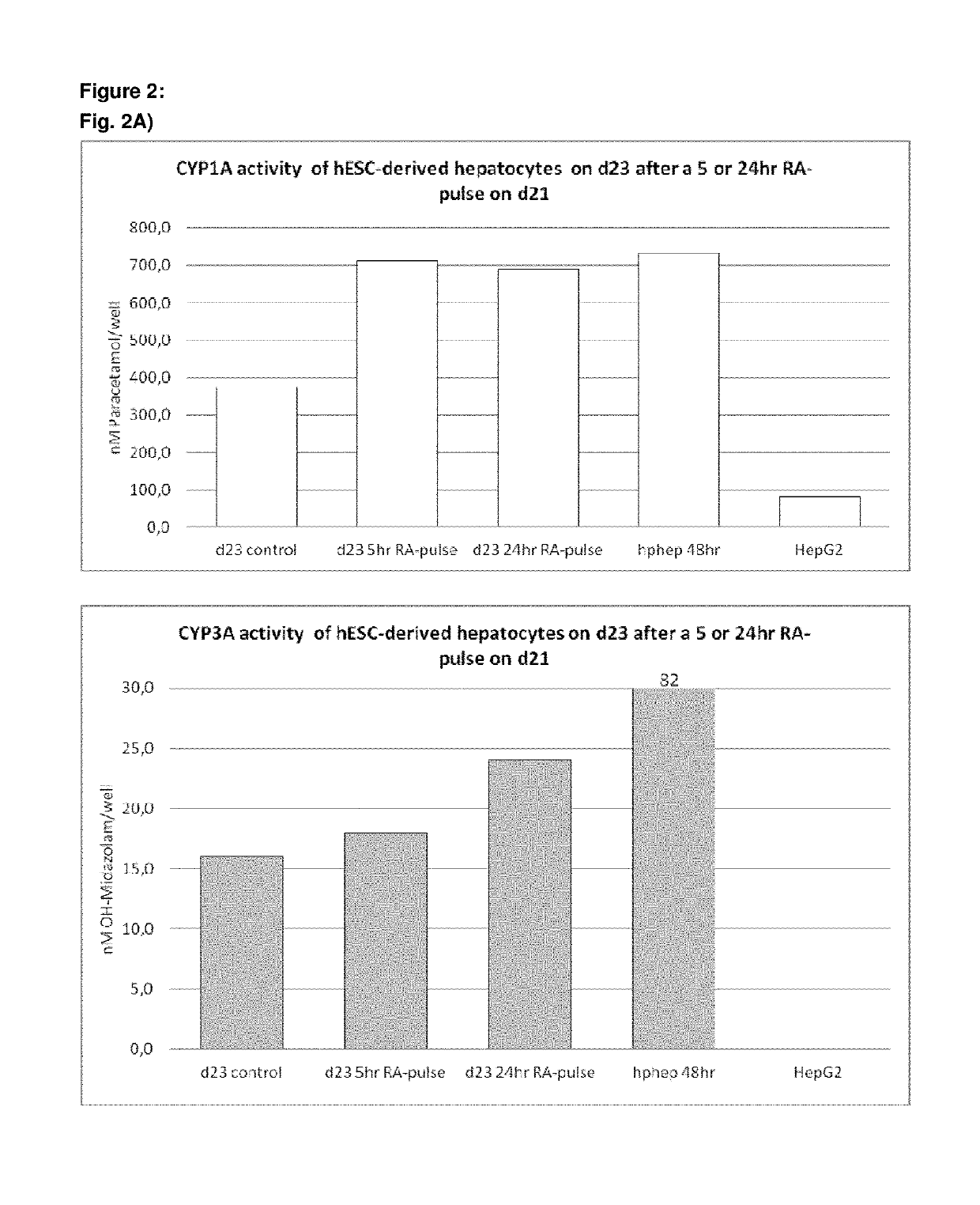Maturation of hepatocyte-like cells derived from human pluripotent stem cells
a technology of human pluripotent stem cells and hepatocytes, which is applied in the field of directed differentiation and maturation of hepatocytelike cells, can solve the problems of difficult to maintain cells in long-term culture, difficulty in obtaining consistent, homogenous cell populations, and new pharmaceuticals. achieve the effects of improving morphology and yield of de cells, reducing expression, and increasing gene expression
- Summary
- Abstract
- Description
- Claims
- Application Information
AI Technical Summary
Benefits of technology
Problems solved by technology
Method used
Image
Examples
example 1
Maintenance of hPS Cell Types
[0395]All hPS cells (as defined above) can be used as staring material for this invention. For the examples below in particular hepatocyte-like cells were derived in vitro from undifferentiated human embryonic stem cells (hESC) established on mEF feeder cells (Heins et al 2004) and maintained under feeder-free conditions. The cell lines used for this experiment could be, but are not limited to the hES cell lines SA167, SA181, SA461 (Cellartis AB, Goteborg, Sweden) and they can be propagated as described by Heins et al. 2004. These cell lines are listed in the NIH stem cell registry, the UK Stem Cell bank and the European hESC registry and are available on request.
[0396]Along with hPS obtained from hESC, hiPS (human induced pluripotent stem) cells have also been used for the derivation of hepatocytes for the examples of this invention.
[0397]The hiPSC line used in this invention was derived as followed: Human dermal fibroblasts (CRL2429, ATCC) were maintai...
example 2
Differentiation of hPS Cell Types to Produce Hepatocyte-Like
[0398]Hepatocyte-like cells may be derived from hPS cells by employing the following exemplary basic protocols A, B, C, and D:
[0399]Protocol A:
[0400]Undifferentiated hPS cells are dissociated and seeded directly in freshly prepared day 0—medium. The different mediums were prepared freshly and added day 0, 1, 2, 3, 4, 5, 7 and then every second or third day during the pre-hepatic phase, and differentiation and maturation phase.
[0401]Day 0
[0402]RPMI 1640 (+0.1% PEST, +1% Glutamax)
[0403]1×B27
[0404]100 ng / ml Activin A
[0405]1 mM NaB
[0406]5 μM ROCK inhibitor
[0407]Day 1
[0408]RPMI 1640 (+0.1% PEST, +1% Glutamax)
[0409]1×B27
[0410]100 ng / ml Activin A
[0411]1 mM NaB
[0412]Day 2-7
[0413]RPMI 1640 (+0.1% PEST+1% Glutamax)
[0414]1×B27
[0415]100 ng / ml Activin A
[0416]0.5 mM NaB
[0417]On day 7 the cells are passaged. The cells are incubated for 3-7 minutes with TrypLE Select at 37° C., the same volume of VitroHES is added and the cell suspension i...
example 3
Effect of Treatment of hESC-Derived Hepatocyte-Like Cells with 9 Cis-Retinoic Acid on Expression of Different HNF4α Isoforms
[0495]Procedure:
[0496]Following the basic protocol A, hepatocyte-like cells derived from hES cells cultured on a Gelatin-based coating were treated with 1 or 2 μM 9 cis-retinoic acid for 5 hr, 24 hr or 48 hr on day 23 of the protocol (i.e. on day 9 of the differentiation and maturation) or long term from day 14 (i.e. starting day 1 of the differentiation and maturation phase) and onwards and analysed immediately after the exposure (FIG. 1 A, B, C) or 7 days later (FIG. C). Three different HNF4α-TaqMan assays were used for analysis of HNF4α expression: one assay detecting all 9 HNF4α isoforms, one assay detecting isoforms 1-3 (including the adult isoforms 1 and 2) and one assay detecting isoforms 4-9 (including the fetal isoforms 7 and 8). Isoforms 3, 4, 5, 6 and 9 are not expressed at all in vivo or at very low levels and can therefore be neglected.
[0497]Result...
PUM
| Property | Measurement | Unit |
|---|---|---|
| time | aaaaa | aaaaa |
| time | aaaaa | aaaaa |
| time | aaaaa | aaaaa |
Abstract
Description
Claims
Application Information
 Login to View More
Login to View More - R&D
- Intellectual Property
- Life Sciences
- Materials
- Tech Scout
- Unparalleled Data Quality
- Higher Quality Content
- 60% Fewer Hallucinations
Browse by: Latest US Patents, China's latest patents, Technical Efficacy Thesaurus, Application Domain, Technology Topic, Popular Technical Reports.
© 2025 PatSnap. All rights reserved.Legal|Privacy policy|Modern Slavery Act Transparency Statement|Sitemap|About US| Contact US: help@patsnap.com



